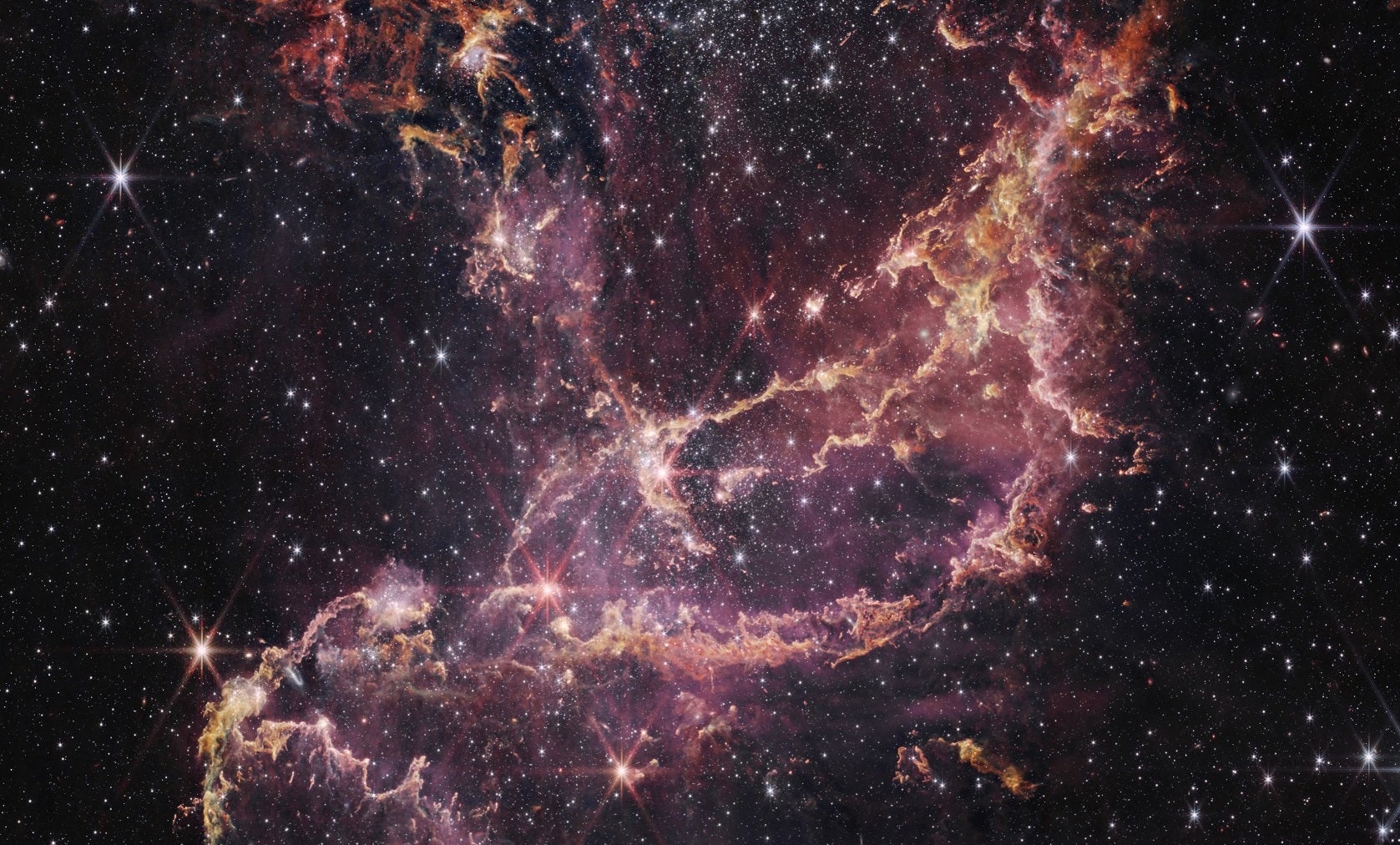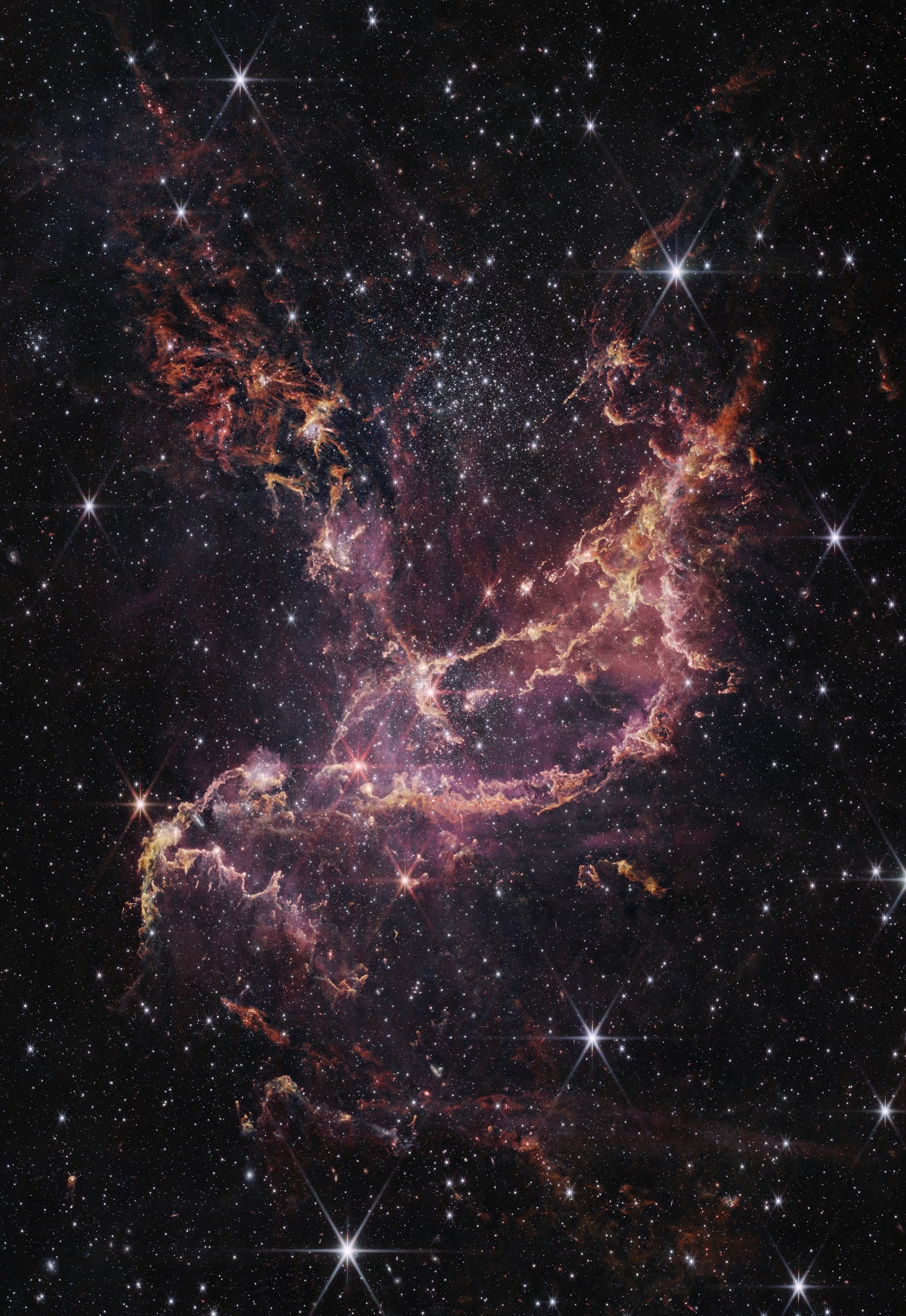Astonishing new Nasa image shows stars and planets as they form
New picture comes as JWST finds its first planet

Your support helps us to tell the story
From reproductive rights to climate change to Big Tech, The Independent is on the ground when the story is developing. Whether it's investigating the financials of Elon Musk's pro-Trump PAC or producing our latest documentary, 'The A Word', which shines a light on the American women fighting for reproductive rights, we know how important it is to parse out the facts from the messaging.
At such a critical moment in US history, we need reporters on the ground. Your donation allows us to keep sending journalists to speak to both sides of the story.
The Independent is trusted by Americans across the entire political spectrum. And unlike many other quality news outlets, we choose not to lock Americans out of our reporting and analysis with paywalls. We believe quality journalism should be available to everyone, paid for by those who can afford it.
Your support makes all the difference.A new image taken by the James Webb Space Telescope could show the very beginnings of planets.
The vast, swirling new image shows a young cluster of stars known as NGC 346, located in the Small Magellanic Cloud or SMC. They are found more than 200,000 lightyears from Earth.
Scientists believe that conditions in that star cluster are similar to those in the early universe, when it was giving birth to new stars at a rapid rate.
The image allows scientists to look at that process as it happens, watching stars as they are formed. But it might also include planets – which would suggest that new worlds were forming earlier in the universe than scientists realised.

Astronomers believe studying this region could help shed light on how the first stars formed during the “cosmic noon”, which is only two or three billion years after the Big Bang.
The new picture comes as scientists announced that JWST’s first planet had been found – and that it was remarkably similar to Earth.
Guido De Marchi, of the European Space Agency, and a co-investigator on the research team that helped produce the image, said: “We’re seeing the building blocks, not only of stars but also potentially of planets.
“And since the Small Magellanic Cloud has a similar environment to galaxies during cosmic noon, it’s possible that rocky planets could have formed earlier in the Universe than we might have thought.”
The NGC 346 houses protostars - which are clouds of gas and dust in space that are developing into stars.
Astronomers say studying protostars is the best way to understand how stars formed.
As stars form, they gather gas and dust, which can look like ribbons from the surrounding molecular cloud.
The material collects into a disk that feeds the central protostar.
While astronomers have previously detected gas around protostars within NGC 346, JWST’s observations have also detected dust in these disks.
Olivia Jones, Science and Technology Facilities Council Webb Fellow at STFC’s UK Astronomy Technology Centre and lead author on the upcoming paper, currently under peer review, said: “This is the first time we can detect the full sequence of star formation of both low and high mass stars in another galaxy.
“This means we have far more data to study at high resolution, offering us new information on how the birth of stars shapes their environment and even greater insight into the star formation process.”
Additional reporting by Press Association
Join our commenting forum
Join thought-provoking conversations, follow other Independent readers and see their replies
Comments